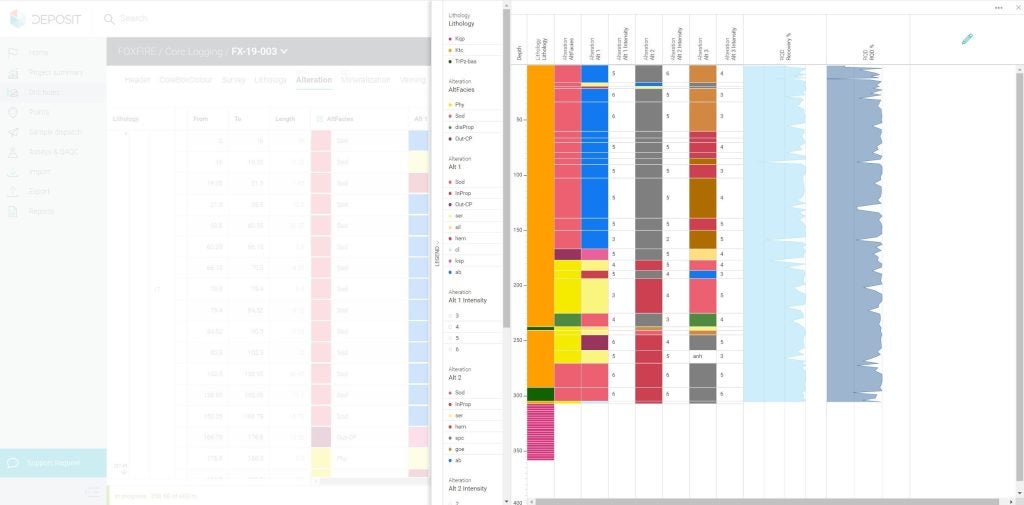
Greenhouse gas concentrations, global sea level and ocean heat content reached record highs in 2022, according to the 33rd annual State of the Climate report (PDF here).
The international annual review of the world’s climate, led by scientists from NOAA’s National Centers for Environmental Information (NCEI) and published by the Bulletin of the American Meteorological Society (AMS), is based on contributions from more than 570 scientists in over 60 countries. It provides the most comprehensive update on Earth’s climate indicators, notable weather events and other data collected by environmental monitoring stations and instruments located on land, water, ice and in space.
“This report is a truly international effort to more fully understand climate conditions around the globe and our capacity to observe them,” said NCEI Director Derek Arndt. “It is like an annual physical of the Earth system, and it serves present and future generations by documenting and sharing data that indicate increasingly extreme and changing conditions in our warming world.”

2022 was the warmest La Niña year on record as increasingly extreme and changing conditions impacted the globe. Photo of Fort Pierce, FL, jetty storm surge by Carolyn Fortuna / CleanTechnica.
“People are causing the largest known change in global climate since our transition to agriculture thousands of years ago,” said Paul Higgins, associate executive director of the American Meteorological Society. “The State of the Climate in 2022 report — an ongoing collaboration between NOAA and AMS — helps us understand the climate system, the impact people are having on climate and the potential consequences. The report can help inform the decisions needed to enable humanity and all life to thrive for generations to come.”
Notable findings from the international report include:
- Earth’s greenhouse gas concentrations were the highest on record. Carbon dioxide, methane and nitrous oxide — Earth’s major atmospheric greenhouse gases — once again reached record high concentrations in 2022. The global annual average atmospheric carbon dioxide concentration was 417.1 parts per million (ppm). This was 50% greater than the pre-industrial level, 2.4 ppm greater than the 2021 amount, and the highest measured amount in the modern observational records as well as in paleoclimatic records dating back as far as 800,000 years. The annual atmospheric methane concentration also reached a record high, which was a 165% increase compared to its pre-industrial level and an increase of about 14 parts per billion (ppb) from 2021. The annual increase of 1.3 ppb for nitrous oxide in 2022, which was similar to the high growth rates in 2020 and 2021, was higher than the average increase during 2010–2019 (1.0 ± 0.2 ppb), and suggests increased nitrous oxide emissions in recent years.
- Warming trends continued across the globe. A range of scientific analyses indicate that the annual global surface temperature was 0.45 to 0.54 of a degree F (0.25 to 0.30 of a degree C) above the 1991–2020 average. This places 2022 among the six warmest years since records began in the mid-to-late 1800s. Even though the year ranked among the six warmest years on record, the presence of La Nina in the Pacific Ocean had a cooling effect on the 2022 global temperatures in comparison to years characterized by El Nino or neutral El Nino–Southern Oscillation (ENSO) conditions. Nonetheless, 2022 was the warmest La Nina year on record, surpassing the previous record set in 2021. With the re-emergence of El Nino in 2023, globally-averaged temperatures this year are expected to exceed those observed in 2022. All six major global temperature datasets used for analysis in the report agree that the last eight years (2015–2022) were the eighth warmest on record. The annual global mean surface temperature has increased at an average rate of 0.14 to 0.16 of a degree F (0.08 to 0.09 of a degree C) per decade since 1880, and at a rate more than twice as high since 1981.
- Ocean heat and global sea level were the highest on record. Over the past half-century, the ocean has stored more than 90% of the excess energy trapped in Earth’s system by greenhouse gases and other factors. The global ocean heat content, measured from the ocean’s surface to a depth of 2,000 meters (approximately 6,561 ft), continued to increase and reached new record highs in 2022. Global mean sea level was record high for the 11th-consecutive year, reaching about 101.2 mm (4.0 inches) above the 1993 average when satellite altimetry measurements began.
- La Niña conditions moderated sea surface temperatures. La Nina conditions in the equatorial Pacific Ocean that began in mid-2020, with a short break in 2021, continued through all of 2022. The three consecutive years of La Nina conditions — an unusual “triple-dip” — had widespread effects on the ocean and climate in 2022. The mean annual global sea-surface temperature in 2022 equaled 2018 as sixth-highest on record, but was lower than both 2019 and 2020 due in part to the long-lasting La Nina. Approximately 58% of the ocean surface experienced at least one marine heatwave in 2022, which is defined as sea-surface temperatures in the warmest 10% of all recorded data in a particular location for at least five days.
- Heatwaves shattered temperature records across the planet. In July, a 14-day heatwave swept through western Europe. A weather station in England recorded a temperature of 104 degrees F (40 degrees C) for the first time ever, over 100 stations in France broke all-time temperature records and stations in at least six other European countries set all-time heat records. The extreme high summer temperatures over Europe resulted in unprecedented melting of glaciers in the Alps, with over 6% of their volume — a record loss — lost in Switzerland in 2022 alone. Record-breaking summer heat in central and eastern Asia, particularly in the Yangtze River basin, led to a devastating drought that affected more than 38 million people and caused a direct economic loss of $4.75 billion U.S. dollars.
- The Arctic was warm and wet. The Arctic had its fifth-warmest year in the 123-year record. 2022 marked the ninth-consecutive year that Arctic temperature anomalies were higher than the global mean anomalies, providing more evidence of the process known as Arctic amplification, when physical processes cause the Arctic to warm more quickly than the rest of the planet. The seasonal Arctic minimum sea-ice extent, typically reached in September, was the 11th-smallest in the 43-year record. The amount of multiyear ice — ice that survives at least one summer melt season — remaining in the Arctic continued to decline. Since 2012, the Arctic has been nearly devoid of ice that is more than four years old. Annual average Arctic precipitation for 2022 was the third-highest total since 1950, and three seasons (winter, summer and autumn) ranked among the 10 wettest for their respective season.
- Although tropical cyclone activity was near average, storms brought devastation to many areas across the globe. There were 85 named tropical storms during the Northern and Southern Hemisphere storm seasons last year, which was near the 1991–2020 average of 87. Three tropical cyclones reached Category 5 intensity on the Saffir–Simpson Hurricane Wind Scale, which was the fewest Category 5 storms globally since 2017. The accumulated cyclone energy for the globe was the lowest since reliable records began in 1981. Despite this, several storms caused massive damage. In the North Atlantic, Hurricane Fiona became the most intense and most destructive tropical or post-tropical cyclone in Atlantic Canada’s history. Hurricane Ian, a major hurricane, killed more than 100 people and became the third costliest disaster in the U.S., with damage estimated at $113 billion U.S. dollars. In the South Indian Ocean, Tropical Cyclone Batsirai dropped 2,044 mm of rain at Commerson Crater in Réunion. The storm also led to 121 fatalities in Madagascar.
The State of the Climate report is a peer-reviewed series published annually as a special supplement to the Bulletin of the American Meteorological Society. The journal makes the full report openly available online. NCEI’s high-level overview report is also available online.
Courtesy of NOAA.
I don’t like paywalls. You don’t like paywalls. Who likes paywalls? Here at CleanTechnica, we implemented a limited paywall for a while, but it always felt wrong — and it was always tough to decide what we should put behind there. In theory, your most exclusive and best content goes behind a paywall. But then fewer people read it! We just don’t like paywalls, and so we’ve decided to ditch ours. Unfortunately, the media business is still a tough, cut-throat business with tiny margins. It’s a never-ending Olympic challenge to stay above water or even perhaps — gasp — grow. So …




